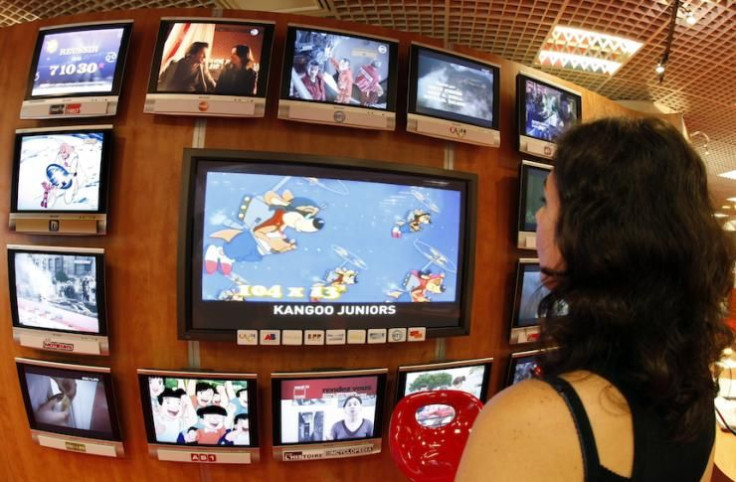How High Can Cable Bills Go? TV Broadcasters Blasted Over Soaring Retransmission Fees

Just when you thought your cable bill couldn’t go any higher, advocates for the cable industry are warning TV viewers to brace for even more price hikes. And they’re pointing fingers directly at your local TV station.
The American Television Alliance -- a collation of cable and satellite companies and other industry-friendly groups -- said the retransmission fees charged by over-the-air broadcasters could push cable bills as high as 500 percent over the next five years. In a news release Friday, the group cited comments reportedly made by broadcast executives at the SNL Kagan TV and Radio Finance Summit in New York last week. According to TVNewsCheck, which attended the summit, one broadcast executive said he sees a day in the “not-too-distant future” when cable and satellite companies pay broadcasters as high as $4, $5 or even $6 per subscriber per month, compared to the average $1 per subscriber they pay today.
Trent Duffy, a spokesman for the American Television Alliance, likened the comment to the heist film “Ocean’s 11,” except instead of a casino getting ripped off, it’s TV viewers.
“It’s sad but not surprising to hear the broadcaster’s brazen plot to bilk billions more from customers for what is supposed to be free TV,” Duffy said in a statement. “The only thing worse is if Congress sits back and lets them do it by failing to modernize old laws that actually permit this. We’re hopeful that they will fix this problem before TV fans get shaken down again.”
Although broadcast signals are available over the airwaves for free, Congress in 1992 gave broadcasters the option to negotiate with cable companies to charge for “retransmission consent.” At first, cable companies balked at the idea, and indeed such fees were uncommon even a decade ago. But they’ve skyrocketed in recent years as broadcasters sought ways to supplement sagging ad revenue. By 2020, retransmission fees are expected to hit $9.3 billion, according to SNL Kagan. The American TV Alliance blames the fees for rising cable bills and an increase in carriage disputes and channel blackouts.
Robert Kenny, a spokesman for the pro-broadcasting group TVFreedom.org, said there are many reasons why cable bills are rising, and arguments that focus too narrowly on retransmission fees fail to take the whole picture into account.
“The American public isn’t fooled by a front group for big pay TV’s outrageous rate hikes, excessive equipment rental fees, buried charges, and erroneous fees that remain on bills until they are questioned by the subscriber,” Kenny said. “Despite viewership that vastly dwarfs that of cable networks, the cost to subscribers to access America’s most-watched broadcast TV content through a paid television subscription amounts to about 10 percent of the total programming costs on a typical pay-TV bill. It's time for ATVA to take real actions and work with its members to identify the glaring market failures that have negatively impacted their customers for the past two decades.”
Soaring fees or no, it’s hard to image consumers paying 500 percent more than they do today -- that is, unless some of them are willing to take out a second mortgage. Such an increase would put the average cable bill at $320 per month, compared to the average $64 a month American households paid in 2014. But the simmering tensions between broadcasters and pay-TV providers do raise questions about how much consumers are willing to take before they ax their subscriptions altogether. Cable and satellite companies are already losing tens of thousands of pay-TV subscribers every quarter, and the growing number of options for cord-cutters -- from standalone versions of HBO and Showtime to over-the-top TV services offering “skinny” bundles -- will likely entice larger numbers of viewers as cable bills continue to rise.
At the same time, rising programming costs are causing ripples throughout the pay-TV ecosphere, and it’s not just the over-the-air broadcasters that are demanding higher fees. Media conglomerates like the Walt Disney Company, 21st Century Fox and Comcast’s NBCUniversal own large portfolios of cable and broadcast networks, giving them the leverage they need to push affiliate fees higher across numerous channel groups. In a research note Monday, analyst Michael Nathanson of MoffettNathanson projected that affiliate fees charged by the nine largest media companies will reach $67.77 billion in 2020, compared to $42.45 billion last year.
Nathanson called 2014 a “watershed moment” for media companies -- the year that affiliate fees overtook advertising in overall dollars for the first time. “Affiliate fees now source on average 50 percent of total industry revenue growth,” Nathanson wrote. “After experiencing a bounce-back post the financial crisis, ad growth is now a low-single digit grower, in part due to budgets shifting away from traditional TV to digital mediums.”
This article has been updated to reflect input from TVFreedom.org. Christopher Zara is a senior writer who covers media and culture. News tips? Email me. Follow me on Twitter @christopherzara.
© Copyright IBTimes 2025. All rights reserved.






















